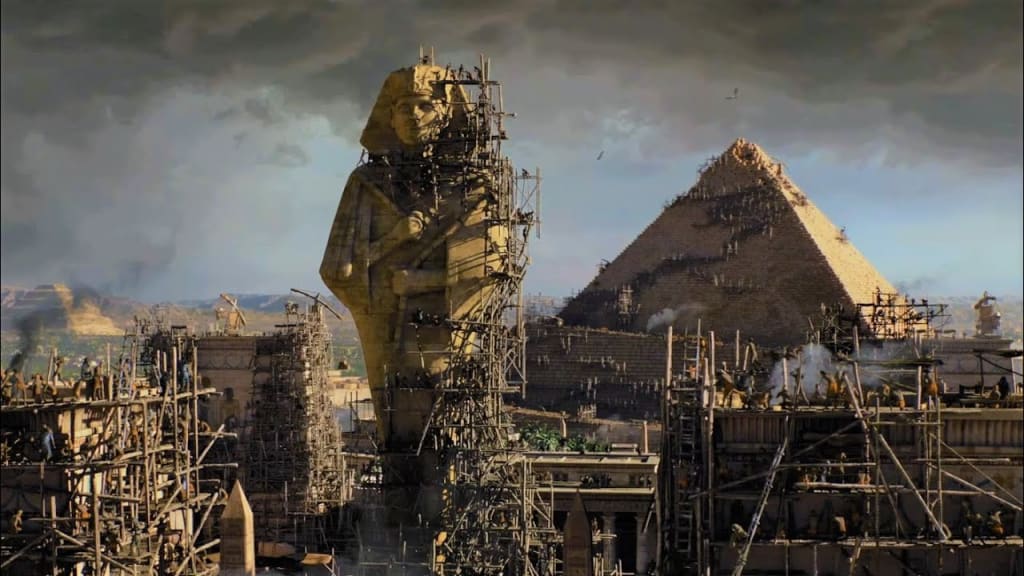
Humans have been living on this planet since about 2 million years ago, which makes us the second eldest race on earth after our primate ancestors. The first humans that we know of lived in Africa and Asia around 100,000 years ago. Around 20,000 BC they had the first farming communities around the Middle East and India. But these early civilizations had to deal with a changing climate and natural disasters. How did they cope? That's what we will be exploring today: What early humans did to survive?
Mesopotamia
The earliest known civilization, Mesopotamia, developed in the area of modern Iraq sometime between the 25th and 20th centuries BC. It is considered to be the first true urban culture, as it was characterized by large cities with well-planned street grids and organized government.
The earliest record of Mesopotamian history dates back to the Ubaid period (c.6100 BC–5500 BC). Mesopotamia encompasses a region which encompasses the land between the Tigris River and Euphrates River, along with parts of Syria and Iran. The Sumerians were among the first civilizations to develop writing; even though they did not invent writing themselves, they were instrumental in developing it by creating an extensive script from which many other languages later derived their own scripts. This is how we know about their history today.
Mesopotamian Civilization had many achievements in science, technology and medicine as well as art; its most famous achievements being architecture like the Great Ziggurat at Ur that was built around 2600 BC, or art like stone reliefs that depict human sacrifice victims tied to a stake while offerings are placed at their feet by servants who are preparing their bodies for consumption by birds of prey such as vultures or crows
Ancient Egypt
The Egyptians were the first to invent, use and build on a large scale. They were also the first to create writing and develop an organized government. Their achievements in art and architecture are still impressive today. The Ancient Egyptians built some of the earliest pyramids in history, as well as the Sphinx, a giant statue of a human face on top of a lion's body.
Evidence suggests that humans first appeared in Africa about 200,000 years ago. Around 70,000 years ago, modern humans moved out of Africa and spread across the globe. Today there are about 2.6 billion people living in Earth's populated areas, but it is estimated that over 9 billion people have lived in Earth since its beginning!
Ancient India
Ancient India is the birthplace of several civilizations that have shaped the course of human history. From the Indus Valley Civilization, to the Vedic period and the Mauryan Empire, ancient India is steeped in tradition and has left behind a legacy that continues to influence modern day societies.
The Indus Valley Civilization was one of the world's earliest cultures, dating back to 3,000 BCE. It was centered around a city called Harappa in what is now Pakistan. The civilization was advanced and sophisticated, with many cities and towns as well as large-scale agriculture and irrigation systems. The Indus Valley people created beautiful stone seals and jewelry out of copper, bronze, gold and electrum (a natural alloy of silver).
The Vedic period lasted from 1500 BCE to 500 BCE in Ancient India. It was during this time that religious texts were written down for future generations. The Vedas are thought to be the oldest known scriptures in Indian culture; they are believed to have been passed down orally for thousands of years before ultimately being written down by priests around 1500 BCE.
Ancient China
The first known civilization in China, the Xia Dynasty, was founded around 2200 BC. At that time, China was divided into several small kingdoms, which were constantly fighting each other for control of the land. The Xia Dynasty lasted for about 200 years before being replaced by the Shang Dynasty.
The Shang Dynasty ruled over China until about 1200 BC, when it was conquered by Qin Shi Huang, who established the Qin Dynasty and unified China under his rule. The Qin's rule lasted until 206 BC when it fell to Han invaders from Korea. The Han Dynasty lasted until 220 AD when it was replaced by another group of invaders from Mongolia called the Xiongnu tribe; they were defeated by Han forces in 230 AD.
The Han Chinese people were originally from central Asia and had migrated southward into southern China during a period of extreme drought on their homelands in Mongolia; they settled there because of a lack of water in their homeland.
During this period, China was divided into many small kingdoms instead of one unified nation as it is today; this occurred because people did not trust others enough to allow them to govern themselves so they formed smaller groups instead of trusting each other as equals.
About the Creator
Enjoyed the story? Support the Creator.
Subscribe for free to receive all their stories in your feed. You could also pledge your support or give them a one-off tip, letting them know you appreciate their work.






Comments
There are no comments for this story
Be the first to respond and start the conversation.